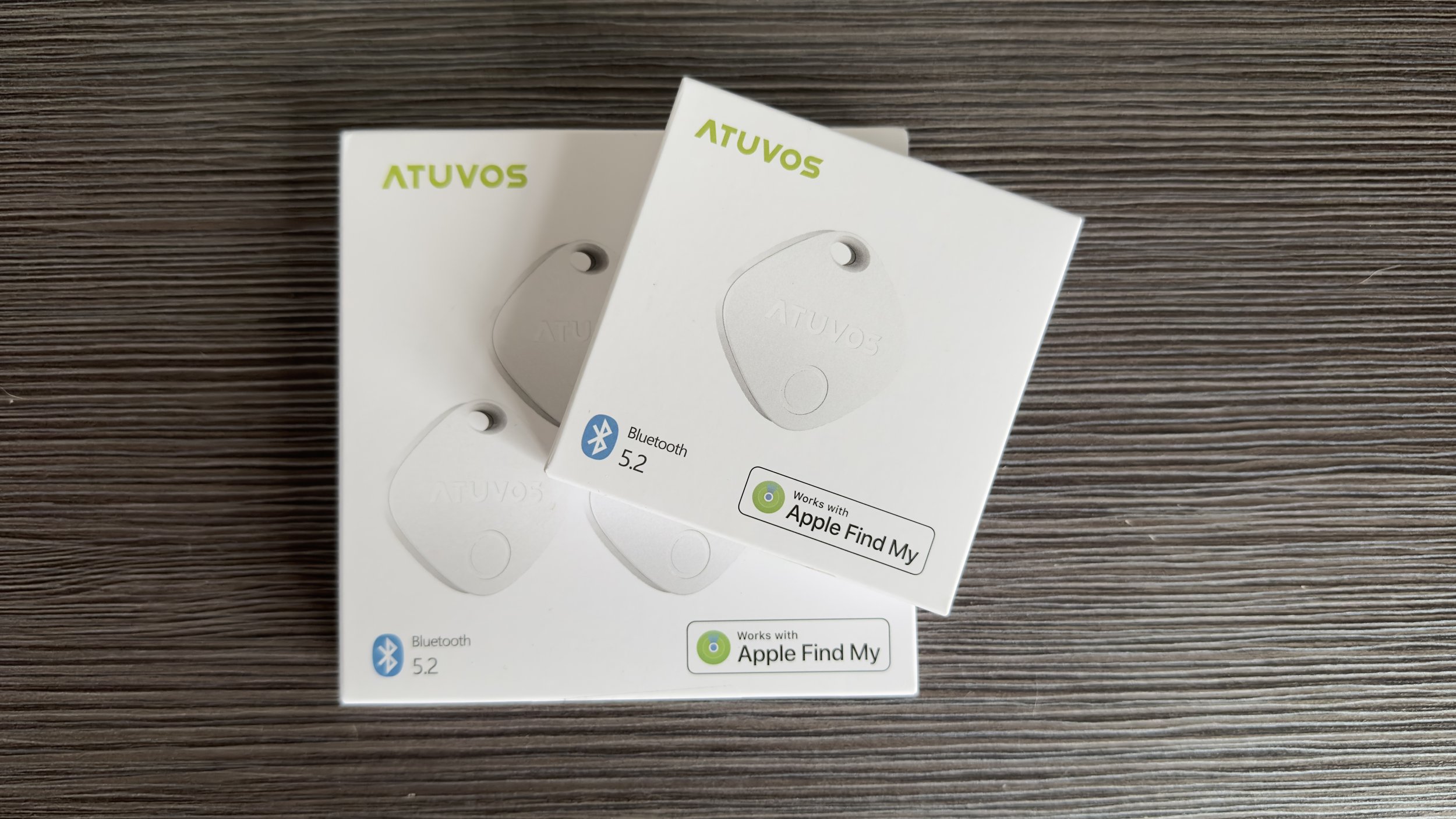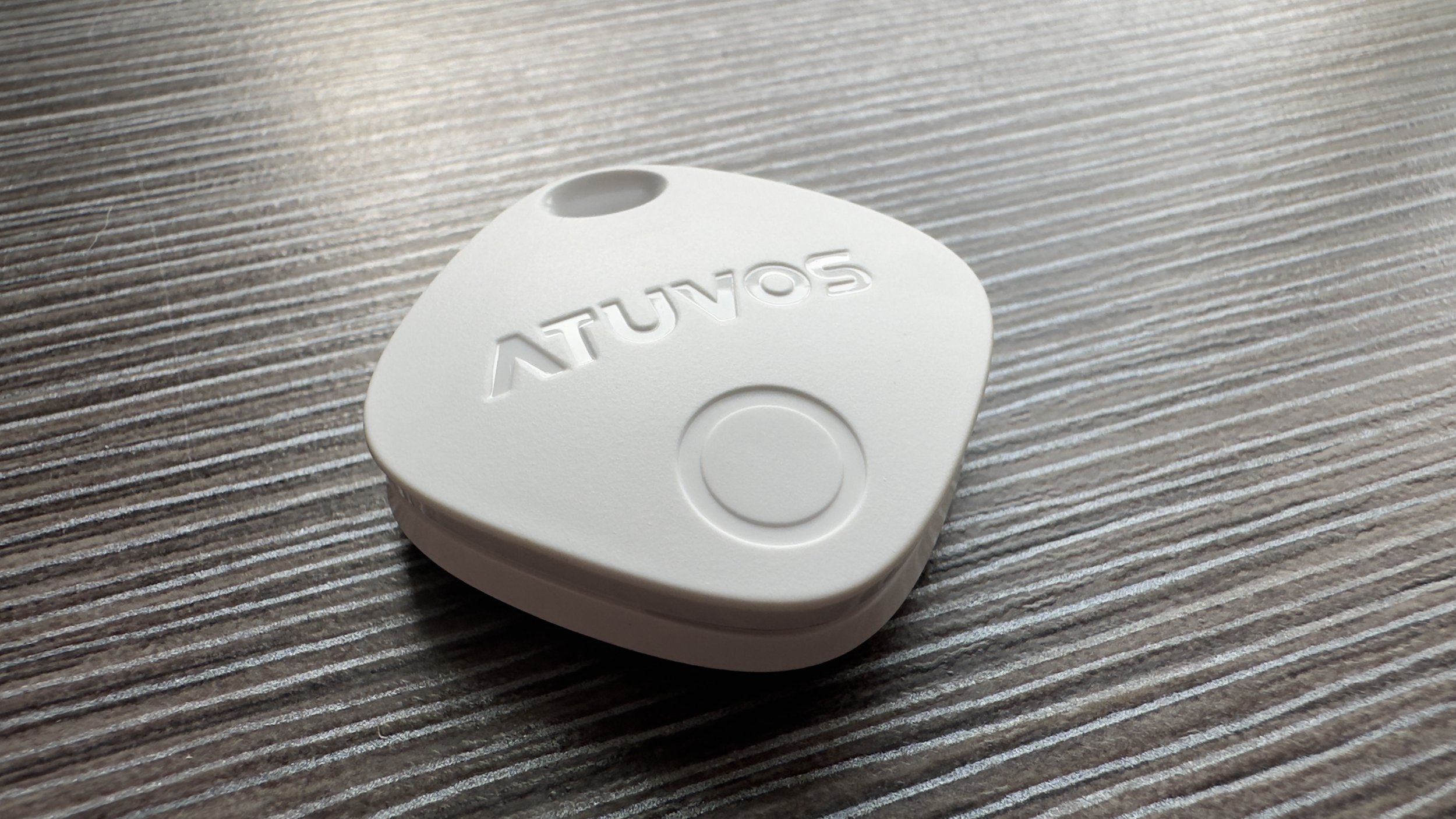Comparison: Atuvos vs. AirTag
Written by Braden Newell
@braden_newell
Photography by Braden Newell
The Apple ecosystem of synchronization and simplicity is one of the top reasons I enjoy using Apple devices. While iCloud and iMessage may be the first two features you think of when it comes to the Apple ecosystem, there's a lot more to explore.
Apple has developed several standards that the company designed not just for itself but also for third parties. For example, HomeKit is Apple's developer framework, allowing third-party smart home device manufacturers to integrate their accessories into the same single application for simpler user control.
Meanwhile, HealthKit is Apple's developer framework, enabling developers to view and add health data to and from a single secure source, the Apple Health app.
Perhaps Apple's most recent opportunity for third-party integration is the Find My network. Atuvos is an inexpensive Bluetooth item tracker which uses Apple's Find My network to keep track of your personal belongings. The company was kind enough to send me a few of their item trackers to test out. Here are my thoughts compared to Apple's AirTag.
What is Apple’s Find My Network?
Apple has over two billion active devices out in the world and 60% of Canada’s smartphone market share. Apple's Find My network uses those devices to transmit and receive low-energy, secure, and anonymous Bluetooth signals from other Apple devices to report their locations. For example, say you drop your pair of AirPods Pro. When an iPhone is near your AirPods Pro, it'll send out a Bluetooth signal. The AirPods Pro will respond to the Bluetooth ping, and the iPhone will then relay the AirPods Pro's location back to you via the Find My network. No third-party app is required: this is all done via iOS's built-in services.
You're likely wondering, how secure is this? These Bluetooth pings produced by your Apple device are encrypted and entirely anonymous. As a bonus, these pings take essentially no additional battery life. The device's location gets reported back to Apple's servers, pushing the Find My alert back to the original device's owner.
Think of the Find My network as Apple's community-driven item-tracking network. It benefits everyone while protecting their privacy. The Find My network is already utilized by AirTags and other Apple devices. Third-party manufacturers like Atuvos are some of the first outside of Apple to integrate the functionality.
Find My Network vs. Bluetooth
The first mainstream item tracker was Tile. Tiles are small Bluetooth item trackers that come in various shapes and sizes. The perk of Tile using regular Bluetooth for their item tracking network is that these trackers are cross-platform: both iOS and Android devices can use them. The downside is Tile has to build out an item-tracking network by getting as many people as possible to download the Tile app on their devices. Essentially, the only people in the Tile network are other Tile owners.
This is where the Apple ecosystem is an advantage. The Find My Network is a part of every Apple device. The service runs as part of other system processes. Since Apple has two billion devices in the wild, their item tracking network is already massively built out. Additionally, just like HomeKit and HealthKit, Find My accessories (regardless of manufacturer) all live in the same app—Find My.
About Atuvos
Atuvos is an item tracker tag exclusively for Apple devices that use Apple's Find My network. Atuvos uses a regular coin cell (CR2032) battery for up to one year of battery life and can be easily replaced when the time comes. The tracker includes a key ring hole to attach to other objects and is IP67 water resistant.
Atuvos is easily paired by launching the Apple Find My app on your Apple device and pressing the button on the front of the tracker. Once paired, you can label the tracker, find its location, and ping it all from the Find My app. The Atuvos has an impressively loud speaker given the pleasantly small form factor.
Atuvos trackers are available on Amazon in a single pack for $20.99, a two-pack for $39.99, and a four-pack for $61.19.
Atuvos vs. AirTag
Atuvos and AirTags actually share many of the same features. Both are water resistant, pair via the Find My app, and have identical battery life with a replaceable battery. Both items can be marked as lost and are identifiable via the Find My app.
AirTags' primary advantage is 'precision finding.' Precision finding uses Apple's U1 chip in iPhone 11 or newer to find an item within a few meters. In the Find My app, AirTag users can launch a unique UI in which users are presented with a direction arrow and approximate distance.
Atuvos's advantage over AirTags is twofold; while Atuvos and AirTags feature speakers to play sound, the chime Atuvos makes is louder and far more noticeable. Atuvos also has a clear advantage in terms of price. AirTags run $39 for a single tag and $129 for a four-pack. Additionally, you'll likely need to purchase an AirTag holder to attach the item track to your keys or another object. Atuvos trackers are essentially half the price, and don't require an additional accessory.
Final Recommendation
While Atuvos doesn't feature precision finding, both item trackers have essentially identical item tracking functionality, water resistance, and battery life. While both play a chime, Atuvos wins out here, no doubt.
Even precision finding is a touchy feature depending on what you're using it for. I wrote a piece about using an AirTag to track my dog, and I'd frequently get a message saying it could not get the AirTag's exact location while moving.
While I think AirTags make for great key trackers due to their precision, I'll keep an Atuvos on my dog for the louder speaker. Additionally, when I travel, I believe the Atuvous will be fantastic for keeping track of my luggage.
If you're looking to track an object that likely won't benefit from precision finding, or you're looking to save some money, grab yourself some Atuvos item trackers. I think you'll be glad you did.
Braden Newell is the former Board Chair, Executive Director, and Technology writer for the SMU Journal. He is now a Learning Experience Designer with a focus on Apple device cybersecurity, a freelance Apple technology writer, and the Journal’s Principal Advisor. You can read more of Braden’s work on his website or follow him on Twitter.




